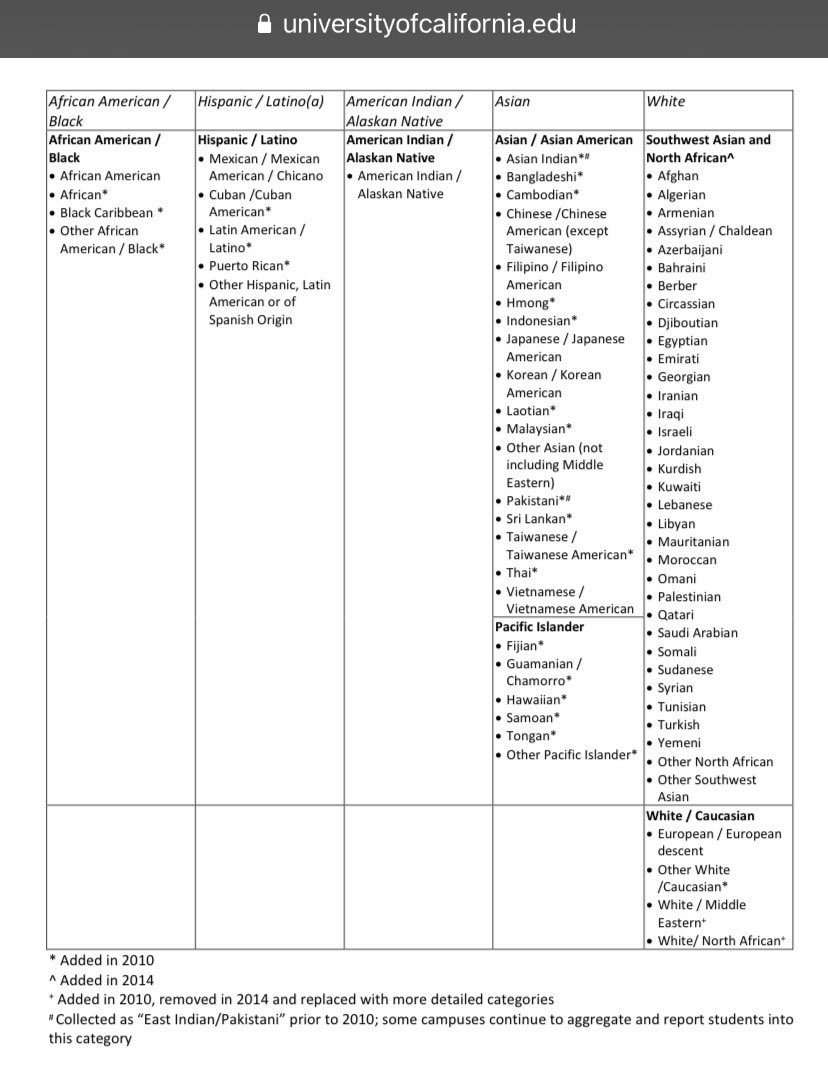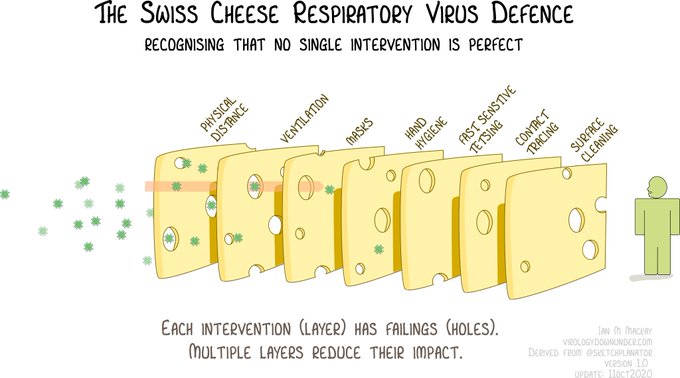
Here is the current, baroque, racial classification system used by the University of California.
universityofcalifornia.edu/sites/default/…
universityofcalifornia.edu/sites/default/…

The arbitrariness of these categories -- including the assignment of people from Djibouti, Sudan, and Somalia to the 'white' category -- should make all involved feel shamed that we have come to this.
And the university imposes a racial hierarchy too! Students can (rightly) indicate that they belong to more than one category, but then: "A student’s primary race/ethnicity is determined by the left-most column in the table above of all the categories selected."
And the arbitrariness is further reinforced by the fact that "It is possible that a student may update their racial/ethnic identification in campus systems" at will.
We can do better as a society than to reify these boundaries.
We can do better as a society than to reify these boundaries.
We can, and must, address and undo the appalling history of ethnic and racial injustice in better ways than this.
For one, we can recognize and privilege #ourcommonhumanity.
For one, we can recognize and privilege #ourcommonhumanity.
• • •
Missing some Tweet in this thread? You can try to
force a refresh




